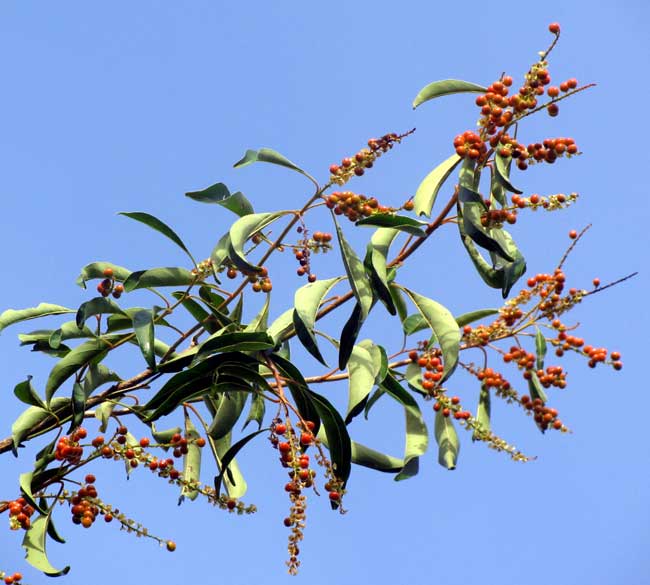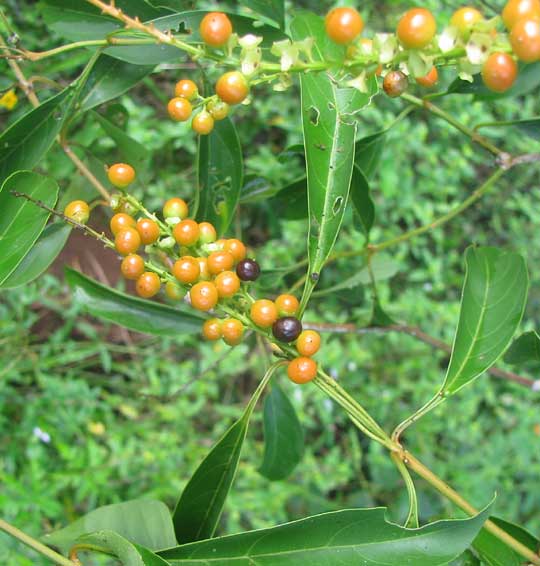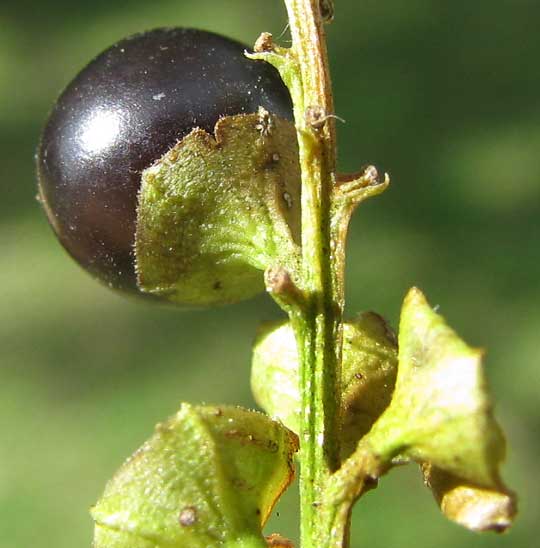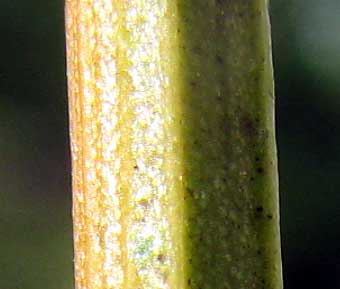Excerpts from Jim Conrad's
Naturalist Newsletter

from the November 29, 2009 Newsletter issued from Hacienda Chichen Resort beside Chichén Itzá Ruins, central Yucatán, MÉXICO; limestone bedrock, elevation ~39m (~128ft), ~N20.676°, ~W88.569°
ALMOST A WILD CHERRY
About a kilometer into the Hacienda's wildlife reserve I came upon a clearing where someone had planted fruit trees. One of the 12-ft-tall trees bore pea-sized fruits similar to the North's wild cherries, as shown above. However, notice that the leaves on those branches are opposite -- two arising at each stem nodes. Cherry trees have alternate leaves (one leaf at each node). Closer I could see the details better, shown below:

Notice that when the yellow-orange fruits mature they turn black. I popped a mature one into my mouth and it tasted pretty good, having a sweet, musky flavor. Especially along the upper stem in the picture you can see where birds have removed about half the fruits, leaving bowl-shaped calyxes on the stem. In fact, when I first got there the tree was busy with Clay-colored Robins and Melodious Blackbirds having a good time.
Those bowl-shaped calyxes are unusual. A close-up is below:

I'd seen such calyxes somewhere but I just couldn't place them. Then I noticed the thing shown below:

The tree's outer branches are slender and brittle, and the picture shows that they're also square in cross section. When you see square stems, you automatically think of a handful of plant families. The most commonly encountered families with square-stemmed species are the Mint and Verbena Families. That was enough to remind me that I'd seen such oversized, bowl-shaped calyxes on members of the Verbena Family. I consulted a checklist of Verbena Family members for the adjacent state of Quintana Roo, and quickly determined that the tree was a member of the genus Citharexylum, most likely CITHAREXYLUM SPINOSUM. Citharexylums are often called Fiddlewoods in English because formerly the wood was prized for cabinetwork and musical instruments.
Citharexylum spinosum's distribution is given as the West Indies to Venezuela and the Guianas, where it's used medicinally. Apparently it's planted here, to our birds' endless delight.